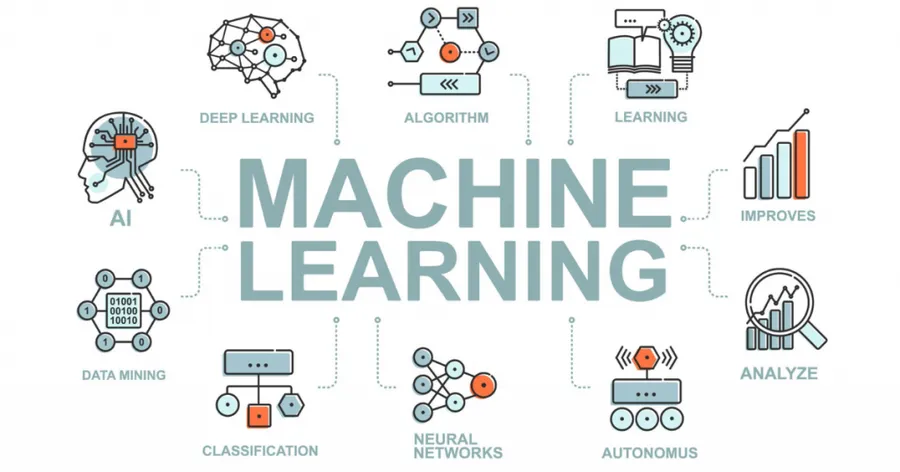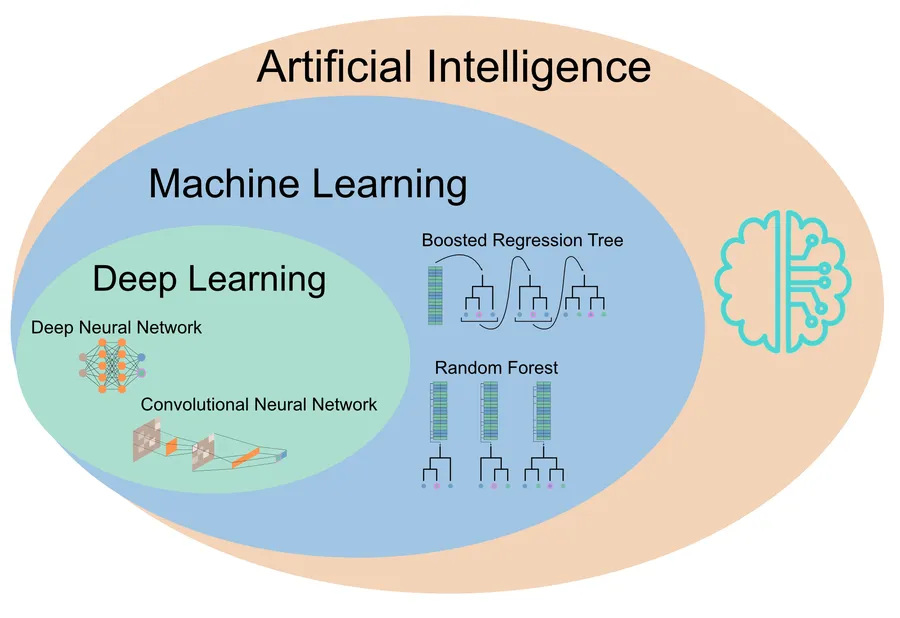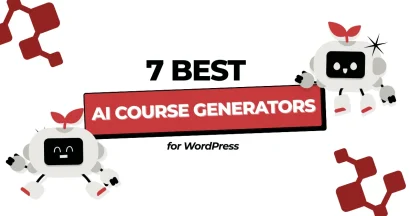Have you ever wondered the difference between Machine Learning (ML) and Artificial Intelligence (AI)? Machine learning vs AI are often used interchangeably, but they are not the same thing. AI is the broader concept of machines performing tasks that require human intelligence, while ML is a subset of AI that focuses on learning from data to make decisions and predictions.
Understanding the distinction between the two is crucial, especially as both continue to reshape industries like healthcare, finance, and technology. The impact of AI and ML is evident in their market growth—the global AI market was valued at approximately $184 billion in 2024, with projections indicating it could surpass $826 billion by 2030. This rapid expansion highlights the increasing reliance on AI-driven technologies and the role ML plays in their development.
In this article, we’ll compare Machine Learning vs AI, exploring their key differences and how they work together.
Let’s get started!
Eduma – Education WordPress Theme
We provide an amazing WordPress theme with fast and responsive designs. Let’s find out!
What is Machine Learning (ML)?

Essentially, machine learning allows computers to learn and get better at tasks without someone directly telling them every step. It’s a part of artificial intelligence where we give computers data, and they find patterns and improve their abilities based on that information.
Instead of writing detailed instructions for every situation, we use special methods, called algorithms, to let the computer study large amounts of data. From this study, the computer figures out how to make decisions.
The more data a machine learning system examines, the better it becomes at its job. The result of this learning process is a model, which is what the computer has learned from the data. A larger amount of data usually leads to a more effective model.
What is Artificial Intelligence (AI)?

Essentially, artificial intelligence means creating machines that can think and act a bit like people. This involves giving computers the tools to do things humans do with their minds. For example, recognizing images, understanding speech, or making sense of information.
It’s not just one single thing. AI is more like a collection of methods that are put together to allow a computer to figure things out, learn from experiences, and then take action to address difficult tasks.
Machine Learning vs AI: How They Connect

It’s easy to get mixed up when people talk about artificial intelligence (AI) and machine learning (ML), since they’re so closely related. You can think of it like this: AI is a big idea, and ML is one of the main ways we try to make that idea real.
AI is about building machines that can do things that normally require human intelligence. This includes things like:
- Reasoning: Figuring out solutions to problems.
- Learning: Improving performance based on experience.
- Perception: Understanding the world through senses like sight and sound.
Now, machine learning is a specific approach within AI. Instead of programming a machine with explicit instructions for every situation, we give it a lot of data. The machine then learns to recognize patterns in that data and uses those patterns to make decisions or predictions. So, ML allows computers to learn without being directly told what to do.
To help visualize this, imagine AI as a large umbrella. Underneath that umbrella, you’ll find different areas, including:
- Machine learning: As described, learning from data.
- Deep learning: A more advanced form of ML that uses neural networks.
- Robotics: Building machines that can interact with the physical world.
- Natural language processing: Enabling computers to understand and use human language.
In essence, ML is a tool that helps us build AI systems. It’s a key part of how we’re making machines more intelligent.
Machine Learning vs AI: Key Differences
Machine Learning vs AI: Definition and Scope
AI: Artificial intelligence is the overarching field dedicated to creating machines that can replicate human cognitive functions. It aims to build systems capable of performing a broad spectrum of tasks requiring intelligence, from simple problem-solving to complex reasoning, thus having a very wide scope.
ML: Machine learning, a subset of AI, focuses on enabling machines to learn from data without explicit programming. Its scope is more specific, concentrating on developing algorithms that allow machines to identify patterns and make predictions or decisions based on data.
Machine Learning vs AI: Goal and Objective
AI: The primary goal of AI is to develop intelligent systems that can mimic human intelligence to solve complex problems. It strives to create machines that can perform tasks as effectively as, or even better than, humans.
ML: The objective of machine learning is to empower machines to learn from data, improving their performance on specific tasks over time. It’s about building systems that can autonomously enhance their accuracy and efficiency through data analysis.
Machine Learning vs AI: Learning Approach
AI: AI employs a diverse range of techniques, including rule-based systems, expert systems, and machine learning, to achieve its goals. It can utilize logic, decision trees, and other methods to enable machines to reason and self-correct.
ML: Machine learning primarily relies on algorithms that learn from data through statistical models. It focuses on identifying patterns and building predictive models, allowing machines to improve their performance as they are exposed to more data.
Machine Learning vs AI: Data Handling
AI: Artificial intelligence systems are designed to handle a wide variety of data types, including structured, semi-structured, and unstructured data. This versatility allows AI to process and interpret complex and diverse information.
ML: While older machine learning algorithms have prefered structured and semi structured data, Modern machine learning, especially deep learning algorithms, can utilize unstructured data. But traditional machine learning algorithms work most effectively with structured or semi-structured data, as they rely on identifying patterns within organized information.
Machine Learning vs AI: Application Scope
AI: AI has a broad application scope, spanning various industries and domains. It’s used in robotics, natural language processing, computer vision, and many other areas, addressing diverse and complex challenges.
ML: Machine learning has a more focused application scope, primarily used for tasks such as predictive modeling, image recognition, and recommendation systems. It excels at improving the accuracy and efficiency of specific, data-driven tasks.
Here’s a comparison table summarizing the key differences between Artificial Intelligence (AI) and Machine Learning (ML):
| Feature | Artificial Intelligence (AI) | Machine Learning (ML) |
| Definition and Scope | Broad field focusing on creating machines that mimic human intelligence; aims for a wide range of cognitive abilities. | Subset of AI; focuses on enabling machines to learn from data without explicit programming; narrower scope, focused on specific tasks. |
| Goal and Objective | To create intelligent systems that solve problems and perform tasks like humans; replicating human cognitive functions. | To enable machines to learn from data, improving performance on specific tasks; building systems that autonomously improve through data analysis. |
| Learning Approach | Diverse techniques including rule-based systems, expert systems, and ML; utilizes logic, decision trees, and various methods. | Primarily relies on algorithms that learn from data through statistical models; focuses on pattern recognition and model building. |
| Data Handling | Handles a wide variety of data types: structured, semi-structured, and unstructured; processes and interprets complex information. | Historically preferring structured or semi-structured data, though modern deep learning can process unstructured data; relies on pattern identification in organized information. |
| Application Scope | Broad range of applications: robotics, natural language processing, computer vision, expert systems; used across diverse industries. | More focused applications: predictive modeling, image recognition, recommendation systems; improves accuracy and efficiency of specific, data-driven tasks. |
Why Understanding AI vs Machine Learning Matters
Recognizing the distinction between AI and ML helps individuals and organizations make smarter technology decisions.
For instance:
- Businesses use AI-driven automation for customer service, while ML models help them forecast sales trends.
- Educators integrate AI chatbots to enhance learning, and ML tools to personalize student progress tracking.
- Developers use ML algorithms to train AI applications that continuously improve without manual coding.
As these technologies evolve, their synergy will power the next generation of intelligent systems — from smart education platforms to AI-powered analytics that drive innovation.
FAQs About Machine Learning vs AI
What is the main difference between Artificial Intelligence and Machine Learning?
Artificial Intelligence (AI) is a broad field that aims to create machines capable of performing tasks requiring human intelligence.
Machine Learning (ML) is a subset of AI that teaches systems to learn and improve automatically from data without explicit programming.
Is Machine Learning a part of Artificial Intelligence?
Yes. Machine Learning is one of the core subfields of AI.
AI is the larger concept, and ML is one of the main ways to achieve it by enabling machines to learn from experience and data.
Can AI exist without Machine Learning?
Yes, but with limitations.
Early AI systems (like rule-based expert systems) didn’t rely on ML.
However, modern AI heavily depends on Machine Learning to process large amounts of data, adapt, and improve accuracy over time.
What are real-world examples of AI and ML?
AI examples: ChatGPT, Siri, self-driving cars, image recognition software.
ML examples: Netflix’s recommendation engine, fraud detection algorithms, and email spam filters.
What is Deep Learning, and how is it related to Machine Learning?
Deep Learning (DL) is a specialized form of Machine Learning that uses artificial neural networks to analyze complex data.
It powers applications like facial recognition, natural language understanding, and autonomous vehicles
How do AI and ML impact the future of technology?
AI and ML are transforming industries like healthcare, education, finance, and marketing.
From personalized learning tools to AI-driven automation, their integration is creating smarter, faster, and more adaptive systems worldwide.
Can I use AI or ML for my website or online business?
Absolutely.
You can integrate AI chatbots, recommendation systems, and predictive analytics to enhance customer experience.
Final Thoughts
While Machine Learning and Artificial Intelligence are closely linked, they’re not identical.
AI represents the broader concept of machines exhibiting human-like intelligence, while ML is the method that enables those machines to learn and adapt over time.
As industries continue to adopt AI-powered solutions, Machine Learning remains the driving force behind making these systems more accurate, efficient, and capable of solving complex problems.
Whether you’re building an AI application or exploring automation in your business, understanding Machine Learning vs AI will help you stay ahead in the rapidly advancing world of intelligent technology.
Read more:
Instantly Boost Your Rankings: 8 Powerful AI Search Engine Optimization Tools
From Prompt to Masterpiece: The Best AI Image Generators, Reviewed
What is a Large Language Model (LLM)? 14+ Best LLMs
Contact US | ThimPress:
Website: https://thimpress.com/
Fanpage: https://www.facebook.com/ThimPress
YouTube: https://www.youtube.com/c/ThimPressDesign
Twitter (X): https://twitter.com/thimpress


